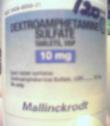[.
]
Content:
Anexia 5/500: Hydrocodone bitartrate, 5 mg, and Acetaminophen, 500 mg.
Anexia 10/650 and Lorcet 10/650: Hydrocodone bitartrate, 10 mg, and Acetaminophen, 650 mg.
Anexia 7.5/650 and Lorcet Plus: Hydrocodone bitartrate, 7.5 mg, and Acetaminophen, 650 mg.
Lortab 10/500: Hydrocodone bitartrate, 10 mg, and Acetaminophen, 500 mg.
Zodone:Hydrocodone bitartrate 5 mg, 7.5 mg, or 10 mg with Acetaminophemn, 400 mg.
Note: Hydrocodone bitartrate is a narcotic analgesic and Acetaminophen is a nonnarcotic analgesic.
Action/Kinetics:
Hydrocodone produces its analgesic activity by an action on the CNS via opiate receptors. The analgesic action of acetaminophen is produced by both peripheral and central mechanisms.
Uses:
Relief of moderate to moderately severe pain.
Contraindications:
Hypersensitivity to acetaminophen or hydrocodone. Lactation.
Special Concerns:
Use with caution, if at all, in clients with head injuries as the CSF pressure may be increased further. Use with caution in geriatric or debilitated clients; in those with impaired hepatic or renal function; in hypothyroidism, Addison's disease, prostatic hypertrophy, or urethral stricture; and in clients with pulmonary disease. Use shortly before delivery may cause respiratory depression in the newborn. Safety and efficacy have not been determined in children.
Side Effects:
CNS: Lightheadedness, dizziness, sedation, drowsiness, mental clouding, lethargy, impaired mental and physical performance, anxiety, fear, dysphoria, psychologic dependence, mood changes.
GI: N&V.;
Respiratory: Respiratory depression (dose-related), irregular and periodic breathing.
GU: Ureteral spasm, spasm of vesical sphincters, urinary retention.
Overdose Management:
Symptoms:
Acetaminophen overdose may result in potentially fatal hepatic necrosis. Also, renal tubular necrosis, hypoglycemic coma, and thrombocytopenia. Symptoms of hepatotoxic overdose include N&V;, diaphoresis, and malaise. Symptoms of hydrocodone overdose include respiratory depression, somnolence progressing to stupor or
coma skeletal muscle flaccidity, cold and clammy skin, bradycardia, and hypotension.
Severe overdose may cause apnea, circulatory collapse, cardiac arrest, and death.
Treatment (Acetaminophen):
- Empty stomach promptly by lavage or induction of emesis with syrup of ipecac.
- Serum acetaminophen levels should be determined as early as possible but no sooner than 4 hr after ingestion.
- Determine liver function initially and at 24-hr intervals.
- The antidote,
N-acetylcysteine, should be given within 16 hr of overdose for optimal results.
Treatment (Hydrocodone):
- Reestablish adequate respiratory exchange with a patent airway and assisted or controlled ventilation.
- Respiratory depression can be reversed by giving naloxone IV.
- Oxygen, IV fluids, vasopressors, and other supportive measures may be instituted as required.
Drug Interactions:
-
Anticholinergics /
 Risk of paralytic ileus
Risk of paralytic ileus
-
CNS depressants, including other narcotic analgesics, antianxiety agents, antipsychotics, alcohol / Additive CNS depression
-
MAO inhibitors /
 Effect of either the narcotic or the antidepressant
Effect of either the narcotic or the antidepressant
-
Tricyclic antidepressants /
 Effect of either the narcotic or the antidepressant
Effect of either the narcotic or the antidepressant
How Supplied:
See Content
Dosage
?Tablets
Analgesia.
1 tablet of Anexsia 7.5/650, Lorcet 10/650, or Lorcet Plus q 4-6 hr as needed for pain. The total 24-hr dose should not exceed 6 tablets. 1-2 tablets of Anexsia 5/500 q 4-6 hr as needed for pain. The total 24-hr dose should not exceed 8 tablets.








Write a first comment!